Super fast and easy Quality chooser to design your own dragon.
Simply choose an attribute from each section and put it together.
The word 'dragon' is an umbrella term, encapsulating all manner of creatures, from mythic serpents to monstrous hybrids. As a class of supernatural being, creatures classified as dragons possess some combination of related traits, major and secondary.
Some claim the creature is an evil being sent by the Great Evil to harm mankind. Others tell tales about benevolent dragons who sacrificed themselves to save humans or promote fertility. Both disaster and bounty have followed in their wakes.
Species
Species Name
 Description goes here; specifically physical characteristics and size comparison.
Description goes here; specifically physical characteristics and size comparison.
Species Name
 Description goes here; specifically physical characteristics and size comparison.
Description goes here; specifically physical characteristics and size comparison.
Species Name
 Description goes here; specifically physical characteristics and size comparison.
Description goes here; specifically physical characteristics and size comparison.
Species Name
 Description goes here; specifically physical characteristics and size comparison.
Description goes here; specifically physical characteristics and size comparison.
Species Name
 Description goes here; specifically physical characteristics and size comparison.
Description goes here; specifically physical characteristics and size comparison.
Species Name
 Description goes here; specifically physical characteristics and size comparison.
Description goes here; specifically physical characteristics and size comparison.
Species Name
 Description goes here; specifically physical characteristics and size comparison.
Description goes here; specifically physical characteristics and size comparison.
Species Name
 Description goes here; specifically physical characteristics and size comparison.
Description goes here; specifically physical characteristics and size comparison.
Species Name
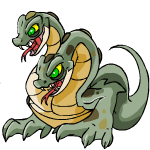 Description goes here; specifically physical characteristics and size comparison.
Description goes here; specifically physical characteristics and size comparison.
Species Name
 Description goes here; specifically physical characteristics and size comparison.
Description goes here; specifically physical characteristics and size comparison.
Species Name
 Description goes here; specifically physical characteristics and size comparison.
Description goes here; specifically physical characteristics and size comparison.
Species Name
 Description goes here; specifically physical characteristics and size comparison.
Description goes here; specifically physical characteristics and size comparison.
Species Name
 Description goes here; specifically physical characteristics and size comparison.
Description goes here; specifically physical characteristics and size comparison.
Species Name
 Description goes here; specifically physical characteristics and size comparison.
Description goes here; specifically physical characteristics and size comparison.
Species Name
 Description goes here; specifically physical characteristics and size comparison.
Description goes here; specifically physical characteristics and size comparison.
Species Name
 Description goes here; specifically physical characteristics and size comparison.
Description goes here; specifically physical characteristics and size comparison.
Species Name
 Description goes here; specifically physical characteristics and size comparison.
Description goes here; specifically physical characteristics and size comparison.
Species Name
 Description goes here; specifically physical characteristics and size comparison.
Description goes here; specifically physical characteristics and size comparison.
Life Stage
Egg
 Dragon eggs come in various colors and sizes depending on the originating parents.
Dragon eggs come in various colors and sizes depending on the originating parents.Dragons have been known to lay eggs in a clutch of up to at least five, and a dragon may lay several clutches during its lifetime.
Eggs incubate for at least 7 years before hatching.
Nestling
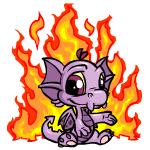 A newly hatched dragon has a full array of abilities, although each ability is but a shadow of it's full power.
A newly hatched dragon has a full array of abilities, although each ability is but a shadow of it's full power.Nestlings remain in the nest cared for by the mother (depending on species) for the first 5 years.
Wyrmling
 The wyrmling is able to take care of itself, at least against relatively weak threats and predators.
The wyrmling is able to take care of itself, at least against relatively weak threats and predators. But are still vulnerable to many dangers and do not have access to their magic yet.
Dragons are in this stage 6-15 years.
Young
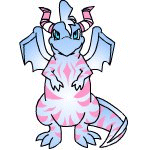 Dragon eggs come in various colors and sizes depending on the originating parents.
Dragon eggs come in various colors and sizes depending on the originating parents.Dragons have been known to lay eggs in a clutch of up to at least five, and a dragon may lay several clutches during its lifetime.
Dragons are in this stage 16-50 years.
Juvenile
 Dragon eggs come in various colors and sizes depending on the originating parents.
Dragon eggs come in various colors and sizes depending on the originating parents.Dragons have been known to lay eggs in a clutch of up to at least five, and a dragon may lay several clutches during its lifetime.
Dragons are in this stage 51-100 years.
Adolescent
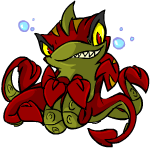 Dragon eggs come in various colors and sizes depending on the originating parents.
Dragon eggs come in various colors and sizes depending on the originating parents.Dragons have been known to lay eggs in a clutch of up to at least five, and a dragon may lay several clutches during its lifetime.
Dragons are in this stage 101-500 years.
Adult
 Dragon eggs come in various colors and sizes depending on the originating parents.
Dragon eggs come in various colors and sizes depending on the originating parents.Dragons have been known to lay eggs in a clutch of up to at least five, and a dragon may lay several clutches during its lifetime.
Dragons are in this stage 501-2,000 years.
Mature
 Dragon eggs come in various colors and sizes depending on the originating parents.
Dragon eggs come in various colors and sizes depending on the originating parents.Dragons have been known to lay eggs in a clutch of up to at least five, and a dragon may lay several clutches during its lifetime.
Dragons are in this stage 2,001-5,000 years.
Noble
 Dragon eggs come in various colors and sizes depending on the originating parents.
Dragon eggs come in various colors and sizes depending on the originating parents.Dragons have been known to lay eggs in a clutch of up to at least five, and a dragon may lay several clutches during its lifetime.
Dragons are in this stage 5,001-10,000 years.
Venerable
 Dragon eggs come in various colors and sizes depending on the originating parents.
Dragon eggs come in various colors and sizes depending on the originating parents.Dragons have been known to lay eggs in a clutch of up to at least five, and a dragon may lay several clutches during its lifetime.
Dragons are in this stage 10,001-25,000 years.
Ancient
 Dragon eggs come in various colors and sizes depending on the originating parents.
Dragon eggs come in various colors and sizes depending on the originating parents.Dragons have been known to lay eggs in a clutch of up to at least five, and a dragon may lay several clutches during its lifetime.
Dragons are in this stage 25,001-75,000 years.
Wyrm
 Dragon eggs come in various colors and sizes depending on the originating parents.
Dragon eggs come in various colors and sizes depending on the originating parents.Dragons have been known to lay eggs in a clutch of up to at least five, and a dragon may lay several clutches during its lifetime.
Dragons are in this stage 75,001-100,000 years.
Great Wyrm
 Dragon eggs come in various colors and sizes depending on the originating parents.
Dragon eggs come in various colors and sizes depending on the originating parents.Dragons have been known to lay eggs in a clutch of up to at least five, and a dragon may lay several clutches during its lifetime.
Dragons are in this stage 100,001+ years.
Twilight
 Dragon enter twilight slightly before fading from existence.
Dragon enter twilight slightly before fading from existence.They stop eating, moving, and eventually cease to exist.
Dragons can slip into this phase as young as 5,000 years.
Breath
A breath weapon is the cone or line shaped weapon exhaled by dragons in battle or as needed. Each type of dragon has a different breath weapon. Breath weapons stem either through magic or from a "Draconis Fundamentum," located either in the dragon's throat or chest. The Fundamentum contains and produces key ingredients for special breath.
Abyss Fire
 This filmy, oily breath is a billowing orange flame with more ash than most other dragon flames, similar to pyroclastic blast of a volcano. It creates large amounts of black smoke and leaves behind an oily soot when the flames die.
This filmy, oily breath is a billowing orange flame with more ash than most other dragon flames, similar to pyroclastic blast of a volcano. It creates large amounts of black smoke and leaves behind an oily soot when the flames die.Caustic Fire
 Corrosive acid like bellowing fire that burns by heat and it's acidic content.
Corrosive acid like bellowing fire that burns by heat and it's acidic content.Phosphyre
 A bioluminescent flame which burns beneath the surface of the water at high temperatures in an azure hue.
A bioluminescent flame which burns beneath the surface of the water at high temperatures in an azure hue.Unquenchable by liquid, it will burn until it's fuel runs out.
Negative Energy / Black Fire
 An unusual element at the depths of the netherworld with unmatched destructive capabilities called the Darkness Flame.
The dark energy then proceeds to instantly incinerate just about anything in its path.
An unusual element at the depths of the netherworld with unmatched destructive capabilities called the Darkness Flame.
The dark energy then proceeds to instantly incinerate just about anything in its path.Ion Fire
 This fire burns hotter than typical dragon fire; measured at temperatures well over 1000 degrees Fahrenheit. Dragons with this type of breath tend to have a low body temperature, and can actually vaporize the area around the blast.
This fire burns hotter than typical dragon fire; measured at temperatures well over 1000 degrees Fahrenheit. Dragons with this type of breath tend to have a low body temperature, and can actually vaporize the area around the blast.
Plasma Fire
 Plasma works almost like a cross between a liquid and a gas; it consists of an explosive semi-solid mass of acetylene-oxygen flames. When at charging energy and shooting, high-pitched sound emits.
When it hits a target, it explodes on impact. The blast of plasma will explode even if it does not hit a target at high altitude.
Plasma works almost like a cross between a liquid and a gas; it consists of an explosive semi-solid mass of acetylene-oxygen flames. When at charging energy and shooting, high-pitched sound emits.
When it hits a target, it explodes on impact. The blast of plasma will explode even if it does not hit a target at high altitude.
Lava
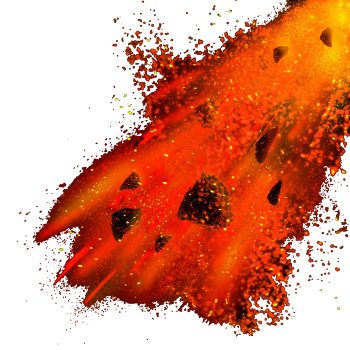 These dragons first eat rocks or metals that melt in their stomach, and regurgitate and spit them back out as balls of molten lava. The substances they use to melt these rocks is Heptane/Oxygen. These lava blasts are shot out with great force and can cause serious damage once they hit their target.
These dragons first eat rocks or metals that melt in their stomach, and regurgitate and spit them back out as balls of molten lava. The substances they use to melt these rocks is Heptane/Oxygen. These lava blasts are shot out with great force and can cause serious damage once they hit their target.
Frostburn
 Typically this breath comes in a steady stream. Containing liquid nitrogen, the breath weapon can reach temperatures up to -321 degrees Fahrenheit. Dragons with this type of breath tend to have a low body temperature, and can actually freeze the area around it.
Typically this breath comes in a steady stream. Containing liquid nitrogen, the breath weapon can reach temperatures up to -321 degrees Fahrenheit. Dragons with this type of breath tend to have a low body temperature, and can actually freeze the area around it.
Mauveine Miasma
 A violet poisonous mist that causes suffocation, flows thickly and low to the ground and dissapates quickly. Does not kill plant life.
A violet poisonous mist that causes suffocation, flows thickly and low to the ground and dissapates quickly. Does not kill plant life.
Noxious Gas
 These dragons have the ability to generate and release a poisonous gas from their mouths, manipulating the poison within them to shape the exhaling of the effect. These shapes can include bursts, streams, spheres, even a mist of it from the mouth, it becomes less potent and less concentrated once it has expanded.
These dragons have the ability to generate and release a poisonous gas from their mouths, manipulating the poison within them to shape the exhaling of the effect. These shapes can include bursts, streams, spheres, even a mist of it from the mouth, it becomes less potent and less concentrated once it has expanded.
Electricity:
 The ability to produce bio-electricity, can attack and stun targets at mid-ranges with highly-charged electron waves or currents. They bite their prey with their electrical bite, stunning and paralyzing them. It also uses its electrical ability as a defense mechanism from predators.
The ability to produce bio-electricity, can attack and stun targets at mid-ranges with highly-charged electron waves or currents. They bite their prey with their electrical bite, stunning and paralyzing them. It also uses its electrical ability as a defense mechanism from predators.
Sonic Boom
 This 'breath' manifests as sonic sounds that travels as waves of blue rings. The blast ripples through the air and can push obstacles and enemies back at great speed. This is deadly at close range; and disorienting at long range.
This 'breath' manifests as sonic sounds that travels as waves of blue rings. The blast ripples through the air and can push obstacles and enemies back at great speed. This is deadly at close range; and disorienting at long range.
Holy Breath
 Pure light (Which appears to be iridescent rainbows) pours from the dragon's mouth and seeks out the evil ones and destroys them with a bolt of holiness. This does not harm those pure of heart.
Pure light (Which appears to be iridescent rainbows) pours from the dragon's mouth and seeks out the evil ones and destroys them with a bolt of holiness. This does not harm those pure of heart.
Euphoria Breath
 This 'breath' manifests as a puff of gas that is intoxicating. Living creatures in the cloud become fascinated. This condition lasts as long as a creature is in the cloud.
This 'breath' manifests as a puff of gas that is intoxicating. Living creatures in the cloud become fascinated. This condition lasts as long as a creature is in the cloud.
Abilities
Beyond the ability to control natural elements or fly without wings, dragons also present with supernatural powers. Supernatural powers are what set dragons apart from other animals. A large serpent or a crocodile would not a dragon make unless imbued with additional powers.
DRAGOMELEON EFFECT
The ability to visually blend into immediate environment. Just a thin line above true Invisibility, a dragon simply fades from sight by taking on the appearance (color and pattern) of the background behind them.
FRIGHTFUL PRESENCE
The mere appearance of a dragon can send pack animals fleeing in terror and shake the resolve of the most stalwart soldier. Usually, a dragon must be of at least young adult age to have this power.
SHAPESHIFITNG
The ability of a being or creature to completely transform its physical form or shape.
DRAGON SHADOW
An invulnerable shadow. Tricks the eye to the shadow, while concealing the true dragon form.
SORCERY
The use of rituals, symbols, actions, gestures, and language with the aim of exploiting supernatural forces. Only dragons willing to forgo other aspects and study religously will have this ability.
DRAGON ROAR
A dragon able to roar so loud that it blows away objects and/or breaks objects with their ferocious vocal cords which can cause vibrations like an earthquake in the immediate vicinity.
DRAGON FLIGHT
A Dragon does not necessarily need wings to achieve flight. This ability also depends on the age of the Dragon. For non-magical flight - lungs connected to a system of air sacs that extend throughout the body decrease the body mass and when fill with hot air reduce body weight.
DRAGON BITE
A dragon's bite attack has reach as if the creature were one size larger. This is a primary attack that deals a crushing and shredding damage to it's foe. Depending on size, a dragon can snap it's enemy in half. Many types and species carry venom either in a channel in their teeth or via their saliva.
DRAGONOSIS
The ability to make suggestions to the subconscious of others. This dragon ability controls the minds of others with targets being completely subject to their mental control. If the victims were placed into a semi-conscious state, they may not have any recollection of the previous actions that they performed while under its effect.
DRAGON CHARM
This ability causes it's recipient to regard the dragon as its trusted friend and ally (treat the target's attitude as friendly). This does not enable the dragon to control the charmed creature as if it were an automaton, but it perceives all words and actions in the most favorable way. Targets One or more creatures, no two of which can be more than 30 ft. apart
DRAGON SIGHT
Dragons see extremely well in all lighting conditions. In normal light, a dragon sees twice as well has a human.
In dim light, a dragon sees four times as well as a human. The dragon's low-light vision is exactly like that of other creatures with the low-light ability, except that the dragon sees four times as far when using artificial illumination.
In complete darkness, a dragon relies on darkvision and blindsense. Both are exactly like the standard abilities, except for the dragon's exceptional range: 120 feet for darkvision and 60 feet for blindsense.
Form
Beyond the ability to control natural elements or fly without wings, dragons also present with supernatural powers. Supernatural powers are what set dragons apart from other animals. A large serpent or a crocodile would not a dragon make unless imbued with additional powers.
Feral
 A term used to describe a creature that does not share almost any human characteristics traits. Less commonly, it is used to describe a regular, non-sapient animal.
A term used to describe a creature that does not share almost any human characteristics traits. Less commonly, it is used to describe a regular, non-sapient animal. They will resemble animals in form, and not wear clothes outside of things like collars, saddles, etc.
Quad
 A quadruped, traditionally, means an animal which walks on four legs. This is mainly to distinguish them from bipeds, which walk on two.
A quadruped, traditionally, means an animal which walks on four legs. This is mainly to distinguish them from bipeds, which walk on two.In this particular instance, this terminology to distinguish morphic and nonmorphic animals. They will be animal shaped, but have intelligence, wear clothes, and live humanoid lives.
Anthro
 Anthropomorphic animals are sometimes called anthro or morphic for short. Anthropomorphic is a word which literally means "human shaped" (from the Greek anthropos (human being) + morphe (shape)). It is used to describe a concept called anthropomorphism, or ascribing human characteristics to non-human beings or objects. Typically, this is used in reference to deities, which are usually given the form of humans. However, the word can apply to any non-human thing, including animals, plants, and inanimate objects.
Anthropomorphic animals are sometimes called anthro or morphic for short. Anthropomorphic is a word which literally means "human shaped" (from the Greek anthropos (human being) + morphe (shape)). It is used to describe a concept called anthropomorphism, or ascribing human characteristics to non-human beings or objects. Typically, this is used in reference to deities, which are usually given the form of humans. However, the word can apply to any non-human thing, including animals, plants, and inanimate objects. Words like zoomorphic and therianthropic also describe creatures on the animal-shaped end of the anthropomorphism spectrum, but anthropomorphic is the more widely used term in the fandom. There are subtle differences between the terms for an animal that thinks like a human and an animal that looks like a human.
Humanoid
 *TNT has stated that Humans do not exist in Neopia, so keep that in mind.*
*TNT has stated that Humans do not exist in Neopia, so keep that in mind.*A humanoid is a character with a basically human body, though it may be different from humans in smaller details of its physical appearance. These are common types of character in science fiction and fantasy stories, where intelligent fictional races are typical.
In the case of some characters, these are upright-walking (bipedal) characters that are basically humans with animal fur/scales, tails, ears, antennae, and sometimes paws or claws.
General Physiology & Behavior
Dragons are inherently magical beings, and are warm blooded reptiles. They have no biological relationship to mammals.
As far as senses, which varies slightly depending on species due to each one, they are superior in most ways to other creatures; like any predator, they have exceptionally acute senses, which only increase with age. Like avian creatures, they have excellent depth perception and comparingly good peripheral vision, able to see twice as well as a human in daylight; unlike avians, they have great night vision, and are able to see even when conditions have no light to offer, although in such conditions they cannot discern between colors.
Like a cat's eye, a dragon's eye has a comparatively large iris with a vertical pupil. This arrangement allows the pupil to open extremely wide and admit much more light than a human eye can. The sclera, or "white," of a dragon's eye is often yellow, gold, green, orange, red, or silver, with an iris of a darker, contrasting color. To a casual observer, a dragon's pupils always look like vertical slits. If one were to look very closely into a dragon's eye, however, one could see a second iris and pupil within the first. The dragon can shift and rotate this inner aperture up to 90 degrees, so that the inner pupil can overlay the outer one or lie at a right angle to it. This ocular structure gives a dragon extremely accurate depth perception and focusing ability no matter how much or how little light is available.
A dragon's mouth features powerful jaws, a forked tongue, and sharp teeth. The exact number and size of a dragon's teeth depend on the dragon's age, habitat, and diet; however, a dragon's array of teeth usually includes four well-developed fangs (two upper, two lower) that curve slightly inward and have cutting edges on both the inner and outer surfaces.
All dragons share a common desire to collect treasure, be it precious, beautiful, magical or just shiny - indeed, the treasure in question needn't always be gold, and may sometimes be aesthetic in nature, ranging from popular artwork or sculptures or even rare books and tomes that might otherwise have an overwhelming monetary value.
Sitely
Layout Template from That Kells Me. Background by transparenttextures.com

